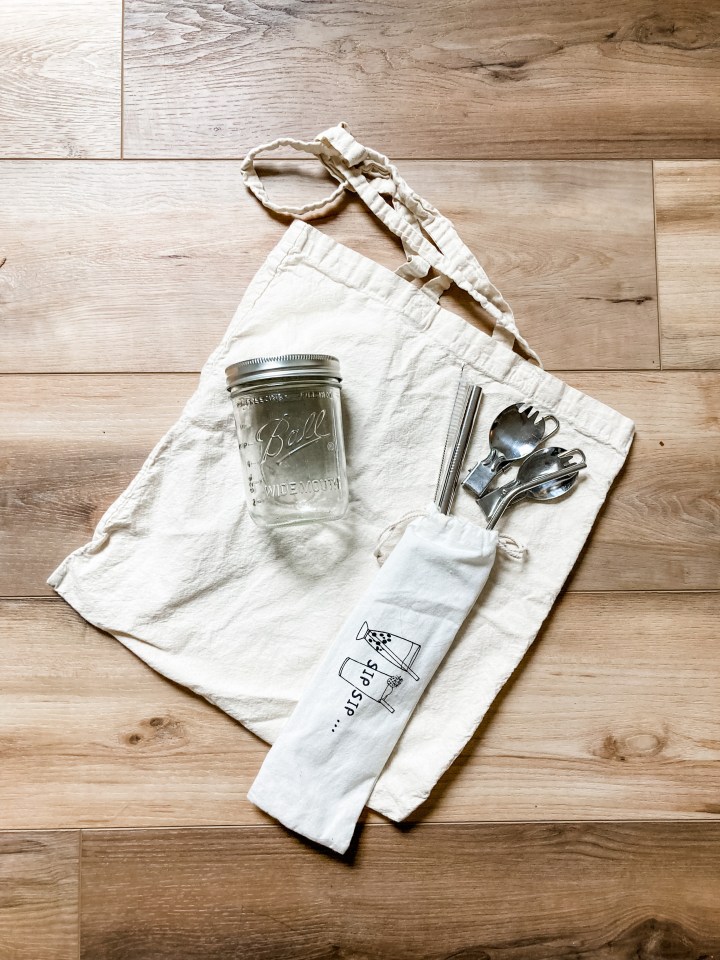
I started examining my relationship with single-use plastic and waste in 2015 (during Plastic Free July 2015’s campaign). For the next few years, I considered myself “zero waste”. I seldom use that term anymore when talking to people who are newer to making sustainable choices. Instead, I use the term “low waste”, as I think it’s a more accurate depiction of the zero waste movement, anyway. (And honestly, how zero waste am I if I drive a car, do home renovation projects, take trips via plane, etc.) It’s now almost mid-July, and I realized that Plastic Free July has been on full swing, and it’s funny that I kind of forgot. The thing is, once you get into the habit of doing things differently, it’s kind of hard to remember why you needed to do things the old way.
I choose to eliminate as much single-use plastic from my life as possible, because I can easily live my life without single-use plastic. The way I see it, there are people out there with disabilities who need to use that plastic straw. Or people who cannot afford the upfront cost of the eco-friendly options. Or people whose occupation requires them to create plastic waste (i.e. doctors). I think the best way to approach quitting single-use plastic is simply asking yourself – can I live my life (safely, healthily, happily) without X? There are certain areas where I still produce single-use plastic. For example, contact solution. There currently isn’t a sustainable and sanitary way of purchasing contact solution beyond buying the ones packaged in plastic bottles. But I give myself quite a bit of grace and I don’t dwell on that. I just think to myself, this is an area where I need to just use recycling to deal with this plastic, how can I offset the plastic I created here by eliminating plastic elsewhere?
One thing I really appreciate about Plastic Free July is that it’s not an all-or-nothing approach. It encourages you to pick a category of single-use plastic that you currently produce, and finding plastic-free alternatives for it. The top 4 single-use plastics circulating today are plastic bags, water bottles, takeaway coffee cups, and plastic straws. In my purse, I always carry a reusable kit with a canvas tote, stainless steel water bottle, mason jar, and stainless steel cutlery/straws. This has helped me in so many situations where I’m caught off guard by a spontaneous coffee run, shopping trip, or food truck stop.
Here are some other ideas of what you can do to reduce your single-use plastic usage:
- Bring reusable produce bags (or go completely bagless) when buying produce at the grocery store. Farmers markets are also great in finding plastic-free produce.
- Bring your own clean, airtight container when going to the butcher/deli section at the grocery store to buy meat/cheese. Ask the person behind the counter to tare your container and avoid the plastic/styrofoam packaging that often come in the pre-packaged meat/cheese section.
- Bring a clean, cotton bag to carry loose bread/pastries at the bakery.
- Shop in bulk! Look for grocery stores/co-ops that have a bulk section where you can find package-free dry goods and spices. Most will let you bring your own container.
- Switch to sustainable period products (period panties, reusable menstrual pads, or menstrual cups) in lieu of disposable tampons/pads.
- Switch to bar soaps for hand/body wash, and shampoo/conditioner bars for hair care.
- Bring your own bar soaps when traveling to avoid little sample size bottles in hotels.
- Switch to a stainless steel safety razor in lieu of a plastic disposable razor, or learn how to wax sustainable (i.e. sugar waxing)
- Think of how the items you currently own can serve multiple purposes. For example, instead of purchasing a plastic microwave splash guard, covering the dish using a large plate would suffice.
- Switch to a deodorant packaged in a cardboard tube or glass jar.
- Buy milk packaged in glass bottles (they tend to be local too!) Or make your own vegan-milk.
- Freeze vegetable scraps and make free vegetable stock instead of buying the ones in cartons.
- Learn to DIY beauty products.
This is just a short list of ideas that can help you eliminate some single-use plastic. What I’ve learned in the past 6 years is to start slow, and little by little, challenge yourself to eliminate the next source of single-use plastic. Pretty soon, this will all feel like second nature.

A good post on plastic free July. Thank you 😊
LikeLike